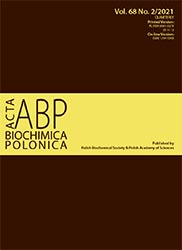Kidney graft function and arterial stiffness in renal transplant recipients
Abstract
Introduction. In renal transplant recipients (RTRs), cardiovascular (CV) complications are associated with non-traditional risk factors, such as a decline in graft function, immunosuppressive therapy, time of dialysis before transplantation, inflammation and anemia. Higher value of arterial stiffness is the consequence of risk factors and it can lead to CV events. The aim of this study was the assessment of the arterial stiffness in RTRs with different value of estimated glomerular filtration rate (eGFR) and its correlation with classical and non-classical CV risk factors. Methods. 344 stable RTRs were enrolled in this study. The arterial stiffness was measured in all participants. The study population was divided in two groups based on the value of eGFR: 201 (≥45 ml/min/1,73 m2) and 143 (<45 ml/min/1,73 m2). Demographic, immunosuppression status, clinical and biochemical information were referred to a single assessment obtained from medical records in the patients’ medical files. Vascular stiffness was determined by an automated oscillometric device. Results. In the group with eGFR<45 ml/min/1.73 m2 there were more patients with cardiovascular diseases (CVD) and the participants were older, in comparison to those with eGFR≥45 ml/min/1.73 m2. Arterial stiffness was significantly higher in the group with worse graft function. The analysis showed a significant correlation between age, cardiovascular disease and all arterial stiffness parameters. In addition, a significant correlation was found between all PWV variables and pulse pressure (PP) and pulsatile stress (PS), in the total population and in groups with eGFR <45 ml/min/1.73 m2 and eGFR≥45 ml/min/1.73 m2. The multivariate analysis showed a significant correlation between age, CVD and baPWV left, baPWV right and cf PWV in the total population. Arterial stiffness did not differ depending on eGFR. Conclusions. Significant influence of age and CVD on arterial stiffness in RTRs was confirmed and PWV did not differ depending on eGFR. Our findings suggest that PS, as a marker for arterial stiffness, represents an easy and cost-effective tool.
Acta Biochimica Polonica is an OpenAccess quarterly and publishes four issues a year. All contents are distributed under the Creative Commons Attribution-ShareAlike 4.0 International (CC BY 4.0) license. Everybody may use the content following terms: Attribution — You must give appropriate credit, provide a link to the license, and indicate if changes were made. You may do so in any reasonable manner, but not in any way that suggests the licensor endorses you or your use.
Copyright for all published papers © stays with the authors.
Copyright for the journal: © Polish Biochemical Society.


